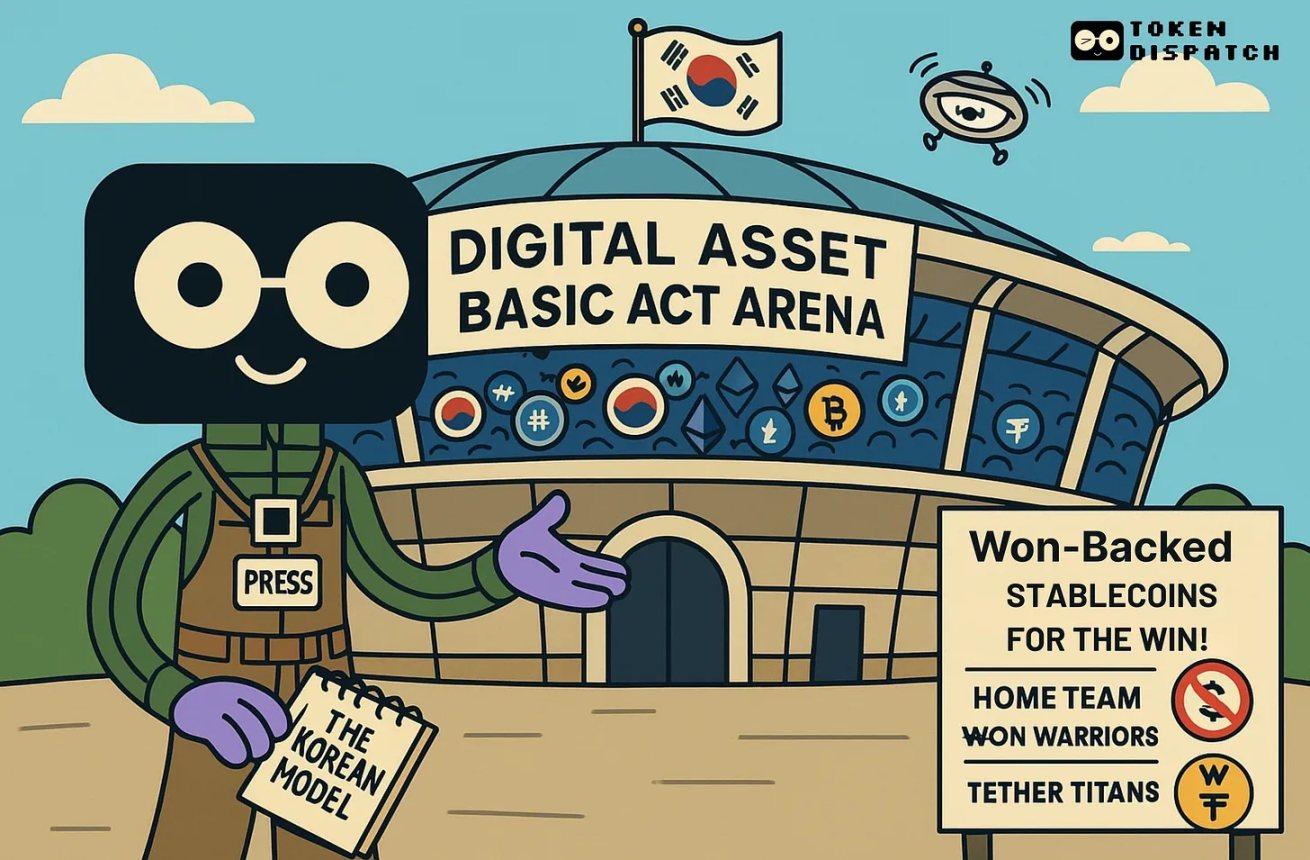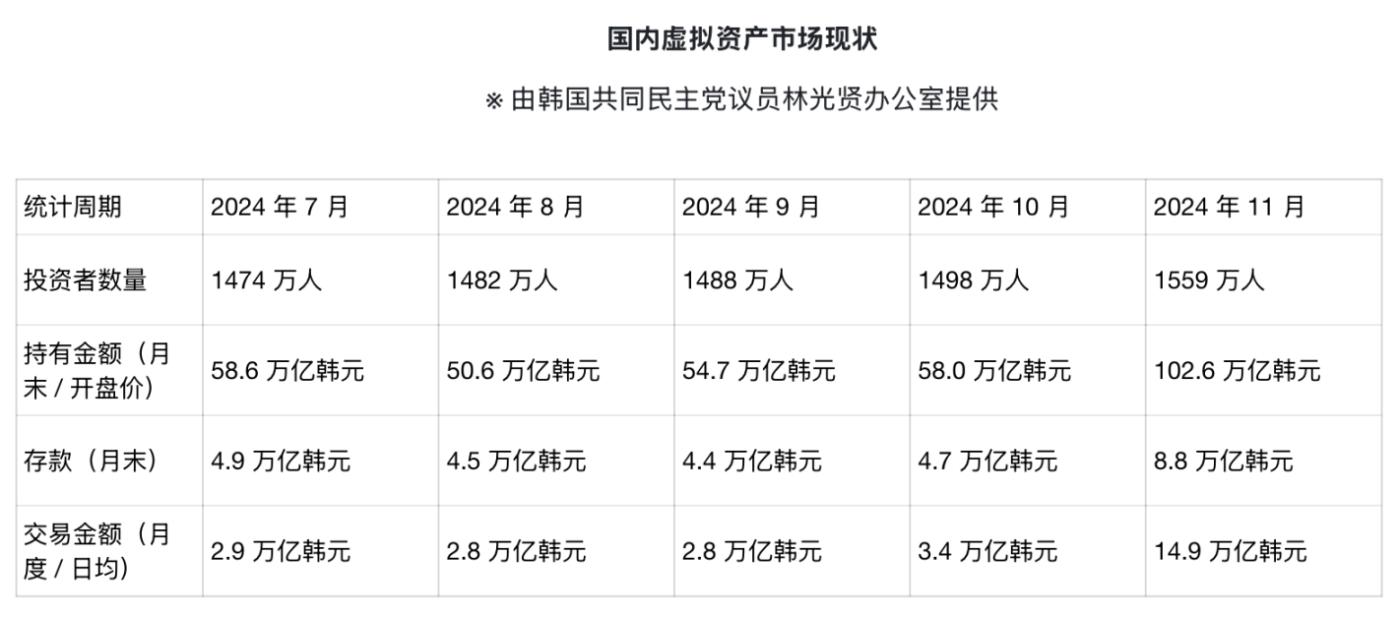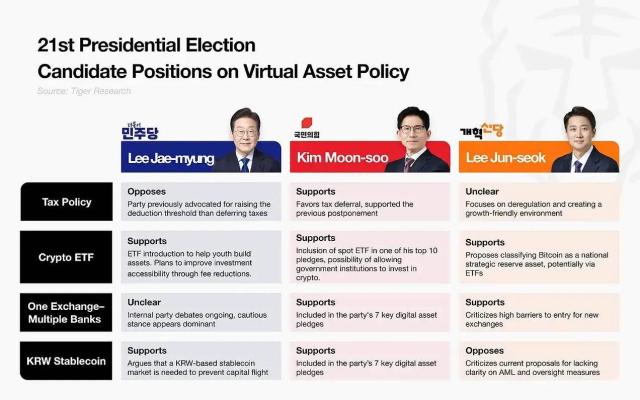Written by: Thejaswini M A
Compiled by: Saoirse, Foresight News
On that bizarre night in December 2024, former President Yun Suk-yeol announced martial law, deployed troops to the National Assembly, and even attempted to take military action against North Korea. He probably never imagined that this political suicide-like farce would give rise to one of the world's most radical cryptocurrency policy agendas.
And that is exactly what happened.
This two-hour failed coup ended in impeachment, creating a power vacuum. Filling this void was Lee Jae-myung, known as a "disruptor" and former provincial governor. With a unified government team and clear governing mandate, the Lee Jae-myung administration introduced the Digital Asset Basic Act within days of taking office and began dismantling the eight-year-old corporate cryptocurrency restriction policy.

Before delving deeper, one point about South Korea needs to be clarified: South Korea is a technologically advanced economy with widespread cryptocurrency awareness, facing structural economic challenges that traditional monetary policies struggle to resolve. Cryptocurrency offers both a solution to current economic pressures and a foundation for long-term competitive advantages.
Currently, the number of cryptocurrency account holders in South Korea has reached 16 million, exceeding the 14.1 million stock investors in the country. This is the first time in South Korean history that retail participation in digital assets has surpassed traditional stocks.
Nearly one-third of South Korea's population participates in cryptocurrency trading, with over half of adults under 60 involved. 20% of government officials have disclosed cryptocurrency holdings totaling approximately $9.8 million. According to a report by the Hana Financial Research Institute, 27% of South Koreans aged 20 to 50 hold cryptocurrencies, with digital assets comprising 14% of their financial asset portfolio.
This is the result of years of increasing cryptocurrency adoption, driven by economic pressures, technological familiarity, and the political system ultimately choosing to accommodate rather than resist this transformation.

Data source@yna
Economic Foundation
South Korea's acceptance of cryptocurrency stems from real economic pressures that traditional policy tools cannot resolve. The country's GDP growth expectation for 2025 is only 0.8%, a figure typically seen only during major financial crises. In March 2025, youth unemployment rose to 7.5%, the highest for the same period since 2021.
South Korea's national debt to GDP ratio is approaching 47%-48%, which increased after the pandemic and has since stabilized. By the end of 2024, household debt to GDP ratio reached 90%-94%, ranking among the highest globally and leading among major developed economies and Asian countries. This contrasts sharply with other major economies where government debt often exceeds household debt. The United States' household debt ratio is 69.2%, with government debt at 128%; Japan's government debt ratio is as high as 248%, while household debt is only 65.1%. South Korea's inverted debt structure creates unique economic pressures: policy decisions are more driven by personal financial stress than sovereign fiscal concerns.
When interest rates rise and economic growth stagnates, this debt burden dampens consumer spending, and monetary policy alone cannot solve this issue.
For millions of young South Koreans, cryptocurrency represents, as researcher Eli Ilha Yune describes, "financial desperation". This is not driven by ideological support for blockchain technology, but a realistic response to an economy with almost no other wealth creation pathways. Traditional investments like stocks offer minimal returns, real estate is unaffordable, and the long-term sustainability of the national pension system is questionable.
This context explains why South Korea's cryptocurrency adoption differs from other markets. Western investors typically view cryptocurrency as a portfolio diversification tool or technological speculation, while South Korean investors see it as an essential financial infrastructure. The government's cryptocurrency policy is a pragmatic response to its already widespread adoption.
The Lee Jae-myung administration developed a cryptocurrency agenda to prevent South Korean wealth from flowing to dollar-denominated digital assets overseas. Currently, South Korean investors primarily choose USDT or USDC when purchasing stablecoins, effectively channeling capital into US-controlled financial infrastructure.
In the first quarter of 2025, South Korean cryptocurrency exchanges transferred approximately 56.8 trillion won (about $40.6 billion) in digital assets overseas, with stablecoins accounting for 26.87 trillion won (about $19.1 billion), nearly 47.3% of all outflowing digital assets.
Interestingly, this capital outflow occurred while the won was relatively strong against the dollar. In 2025, the won appreciated about 6.5% against the dollar, maintaining an exchange rate of 1,393-1,396 won per dollar as of July. This indicates that South Korean investors' preference for US stablecoins is not due to a weakening domestic currency, but because of the lack of won-denominated alternatives and the global dominance of dollar-based cryptocurrency infrastructure.
The Digital Asset Basic Act established a regulatory framework for South Korean companies to issue won-pegged stablecoins. The capital requirement is 500 million won (about $370,000), low enough to encourage domestic competition while maintaining basic standards.
Can this won stablecoin strategy truly prevent capital outflow? South Koreans can still exchange won for USDC if they want dollar assets. Therefore, the strategy's real purpose is to reduce demand for foreign stablecoins by offering similar advantages (programmability, decentralized finance access, 24/7 trading) without currency conversion. More importantly, it keeps financial infrastructure domestic, with fees and custody services flowing to South Korean institutions rather than Circle or Tether. This is behavioral guidance, not capital control, making won-denominated options more convenient while placing financial operations under South Korean regulation.
South Korea's eight major banks have begun collaborating to develop won-pegged stablecoins, targeting launch by late 2025 or early 2026. The alliance includes KB National Bank, Shinhan Bank, Woori Bank, Nonghyup Bank, Korea Development Bank, Suhyup Bank, K Bank, and IM Bank. Their goal is not just to compete with USDT and USDC, but to create financial infrastructure that keeps South Korean economic activity within the domestic system.
This stablecoin strategy reflects broad concerns about the dollar's dominance in digital finance. Currently, 99% of stablecoins are dollar-pegged, giving US financial institutions and regulators excessive influence in digital asset infrastructure.
The Bank of Korea expressed concerns about privately issued stablecoins, warning they could "significantly undermine monetary policy effectiveness and pose systemic risks". This disagreement led to the suspension of the Central Bank Digital Currency (CBDC) project in June 2025, as officials questioned its necessity when private alternatives might more efficiently serve similar functions.
Institutional Transformation
In 2017, due to concerns about speculation and money laundering, South Korea implemented restrictive measures, prohibiting companies, institutions, and financial firms from opening cryptocurrency exchange accounts. Only individuals could trade cryptocurrencies using verified real-name accounts. Institutional and corporate accounts were banned, and banks faced strict compliance obligations. The current government has initiated a phased process to lift these restrictions.
In the initial phase (mid-2025), non-profit organizations and some public institutions are now permitted to convert cryptocurrencies obtained through donations or seizures, provided they meet strict compliance requirements, such as using verified Korean won real-name exchange accounts and establishing internal audit committees.
By the end of 2025, the government will extend cryptocurrency exchange account eligibility to approximately 3,500 listed companies and professional institutional investors through pilot projects. These accounts must be real-name verified and comply with strict anti-money laundering (AML) and KYC protocols. Financial authorities have announced that listed companies will ultimately be allowed to directly participate in cryptocurrency trading, which will drive large-scale adoption at the corporate level.
Major domestic exchanges have launched or upgraded "institutional-grade" products, custody solutions, and support services to address potential growing demand from large enterprises and professional investors.
Currently, traditional financial institutions such as banks, asset management companies, and brokers remain excluded from direct cryptocurrency trading. This setup ensures that the first wave of institutional cryptocurrency activity in South Korea will be led by non-financial enterprises, potentially giving them a competitive advantage when regulatory doors open further.
Political Recognition
Lee Jae-myung's cryptocurrency agenda has received broad political support, not limited to his Democratic Party. In recent campaign activities, both major parties promised to legalize cryptocurrency ETFs, a rare bipartisan consensus moment in South Korean politics. The Financial Services Commission, previously opposed to discussing cryptocurrency ETFs, has now submitted a roadmap planning to approve spot Bitcoin and Ethereum ETFs by the end of 2025.
This political shift reflects cryptocurrency's emergence as a significant voter issue. Over 16 million cryptocurrency holders, representing about one-third of South Korea's total population, have transformed digital asset policy from a niche technical policy to a mainstream political topic.
The government has also taken broader measures to support cryptocurrency enterprises. The Ministry of SMEs and Startups announced plans to remove restrictions, no longer preventing cryptocurrency companies from obtaining venture enterprise status, enabling them to enjoy significant tax benefits, including a 50% corporate income tax reduction for five years and a 75% real estate purchase tax reduction.
South Korean investors have responded enthusiastically to these policy developments. Bank stocks surged significantly after stablecoin trademark applications. Kakao Bank's stock rose 19.3% the day after submitting a cryptocurrency-related trademark application, while KB Financial Group's stock increased 13.38% after a similar application.
More notably, in June 2025, South Korean retail investors injected nearly $450 million into Circle Group's stock, making it the most sought-after overseas stock that month. Since listing in June, Circle's stock has risen over 500%, as Korean investors view it as a bellwether for global stablecoin applications.
This investment pattern reflects investors' profound understanding of how South Korea's stablecoin policy might drive global stablecoin infrastructure demand. Korean investors are positioning themselves for South Korea's potential influence on the global digital asset market.
Lee Jae-myung's cryptocurrency strategy faces significant external pressure. U.S. President Donald Trump threatened to impose reciprocal tariffs of up to 50%, which could severely impact South Korea's export-dependent economy. With exports comprising 40% of GDP, trade disruption could trigger an economic recession, during which cryptocurrency investment funds would be limited, regardless of regulatory sophistication.
The time-sensitive nature creates a race between policy implementation and economic deterioration. South Korean authorities are urgently establishing cryptocurrency infrastructure to prevent potential trade conflicts from making the economic environment too challenging and hindering new investment initiatives.
Domestically, the central bank's opposition to private stablecoins may generate ongoing regulatory tension. South Korean bank officials prefer placing stablecoin issuance under banking supervision rather than allowing tech companies to enter monetary infrastructure domains.
Tax policy remains undetermined. The planned 20% capital gains tax on cryptocurrency earnings exceeding 2.5 million Korean won annually has been repeatedly postponed but is still intended for implementation. How this tax interacts with new corporate cryptocurrency access rules will influence institutional application patterns.
South Korea's cryptocurrency policy's global impact is being closely monitored by the international community, potentially serving as a template for other countries facing similar economic pressures and technological application models. The combination of regulatory clarity, institutional access, and domestic stablecoin infrastructure constitutes a comprehensive digital asset integration approach.
If successful, the South Korean model might influence policy-making in other Asian economies and provide a template for nations seeking to embrace digital asset innovation while maintaining monetary sovereignty.






